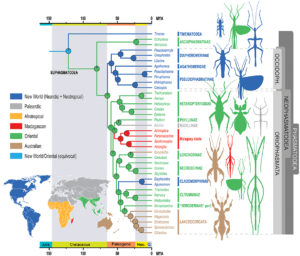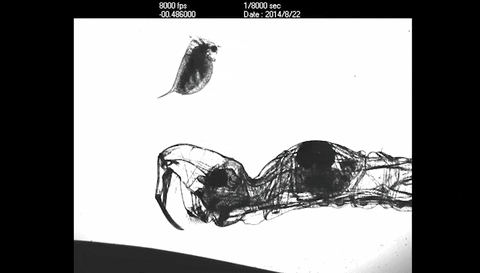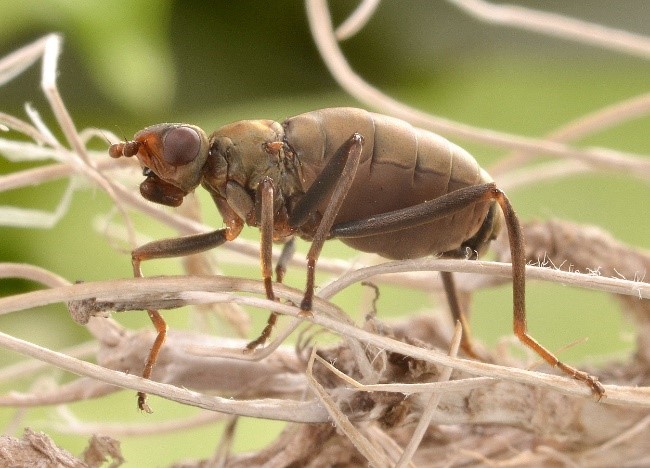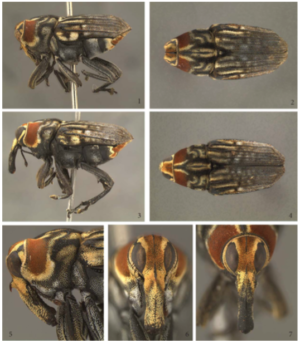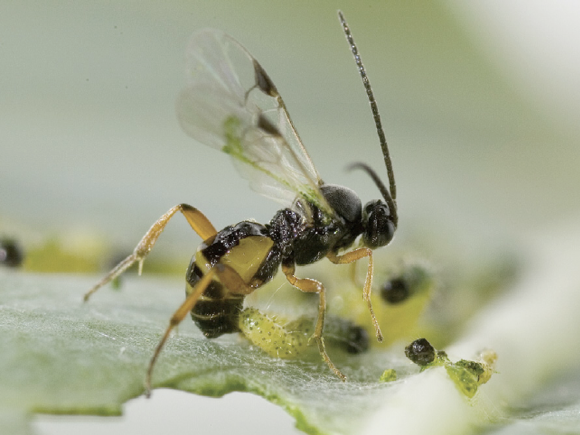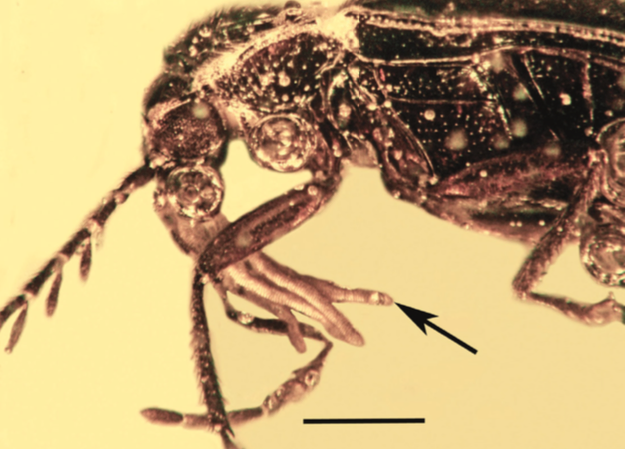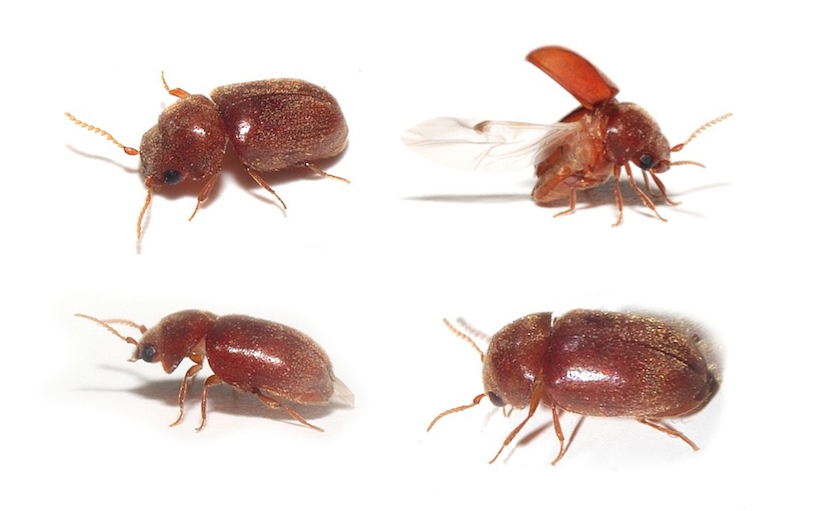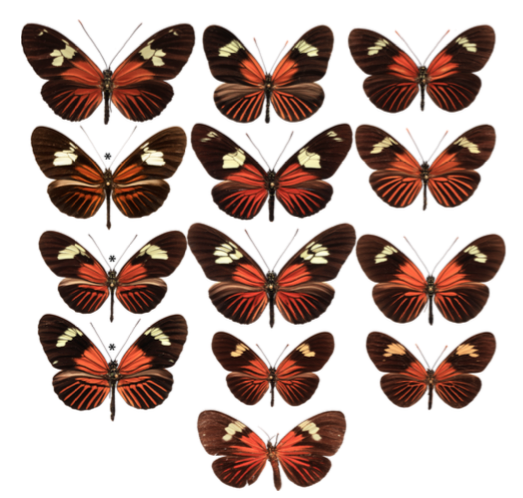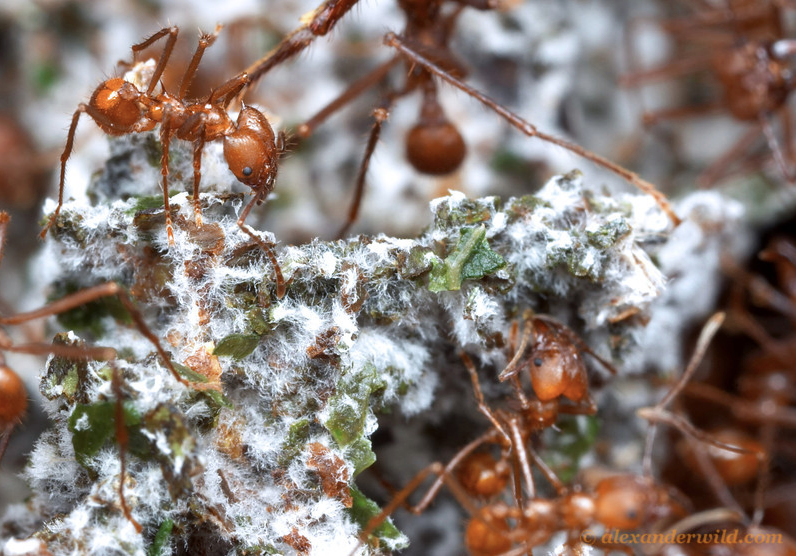by Benoit GILLES The Order of Phasmatodea (phasms and phyllies), composed of more than 3,100 species and 500 genegenes, is one of the oldest groups of insects. They are popular for their ability to camouflage themselves in vegetation. Their morphology, sometimes displaying extravagant shapes, makes them look like twigs, leaves or bark in order to…
Tag: co-evolution
Chaoborus: a lightning attack
by Benoit GILLES The trophic chains of ecosystems such as those found in small ponds are structured in several levels. The first group consists of the so-called primary organisms, constituting phytoplankton, producing their energy from minerals and light energy through the photosynthesis process. At the base of the food chain, these organisms serve as food…
Scale insects: Poorly-know vectors of plant virus
by Etienne Herrbach Exciting study models The scales from the vast superfamily of Coccoidea, rich of over 8,000 species and 33 families (and 16 fossils) (link). Like their sternorrhynchan cousins (aphids, whiteflies, and psyllids), they feed on plant saps using a piercing-sucking mouth apparatus. Their very diverse and sometimes astonishing biological and morphological peculiarities foster numerous studies.…
The Entomofauna of the French subantarctic islands
by Maurice Hulle The Subantarctic islands, among the most isolated in the world, harbour a small number of native terrestrial invertebrates which, in the course of their evolution, have developed specific biological adaptations, the most notable of which is the loss of The flight function in insects. Since their recent discovery and, above all, since…
Conoderinae: the Brazilian weevil who thinks He’s a fly!
Widespread in Curculionidae beetles, also known as weevils, mimicry offers astonishing models of study in these Species. Two Brazilian entomologists, Sergio A. Vanin (department of zoology-university of Sao Paulo) and Tadeu J. Guerra (department of Biology-federal University of Minas Gerais), have described in 2012 a new remarkable species of weevil that mimics Flies of the…
Two wasps, a caterpillar and a cabbage leaf
By Pascal ROUSSE Do you know what a parasitoid is? If so, you also know how fascinating their life cycle is. If not, you will soon know thanks to this detailed example. A paper written by the specialist Pascal Rousse for Passion-Entomologie, a big thank you to the author for agreeing to share his passion…
Orchids and beetles, a very ancient association
Post Views: 2,137 The first flowering plants to appear in the trias (-200 million years) diversified during the Cretaceous and all the Tertiary. caption id=”attachment_3567″
Scarabiasis: colic colos…
Post Views: 5,460 Entomology sometimes takes unexpected paths. This is what is defined as”scarabiasis” (or”canthariasis” from the Greek kantharos scarab and -iasis disease), a situation
Evolutionary history of Heliconius staining
Post Views: 2,005 In insects, wings are subjected to strong natural selection pressures for camouflage, mimicry and warning coloration. The patterns and colours of butterfly
Escovopsis : Parasitism in mushroomists ants
Post Views: 2,591 Mushroom ants have the particularity of feeding exclusively on a Basidiomycete fungus, which they grow on a substrate fed by the collection

